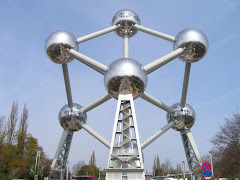The sun protects humans from cosmic rays and dust from beyond the solar system by enveloping in the heliosphere, a bubble of solar wind that extends past Pluto.
Refreshing News reports: "These rays would damage the ozone layer and interstellar dust can dim sunlight and trigger an ice age."
However, when the solar system passes through very dense gas and dust clouds, the heliosphere can shrink until its edge is inside Earth's orbit. So, in their research, the team, led by David Smith, has calculated the squeezing of various stars' protective "astrospheres".
http://refreshingnews9.blogspot.com/2009/06/sun-leaves-earth-wide-open-to-cosmic.html
Op de site Wereldgeheimen: “Exploderende sterren bestoken ons inderdaad met kosmische straling”
Utrechtse astronomen hebben voor het eerst metingen verricht die direct laten zien dat supernovaresten uitstekende deeltjesversnellers zijn. In hun onderzoek, dat op Science Express is gepubliceerd, hebben ze data van ESO’s Very Large Telescope gecombineerd met die van NASA’s Chandra Röntgensatelliet.
http://www.wereldgeheimen.nl/wg/index.php?option=com_content&view=article&id=1062:exploderende-sterren-bestoken-ons-inderdaad-met-kosmische-straling&catid=40:het-heelal&Itemid=68
maandag 29 juni 2009
Leidse onderzoekers opnieuw naar Mauritius voor graf mysterieuze dodo’s op
Onderzoekers uit Leiden gaan deze week voor het vierde achtereenvolgende jaar naar Mauritius om dodo's op te graven in het dodomassagraf in het moeras Mare aux Songes. Dat schrijft DeTelegraaf.
Mare aux Songes is een van de rijkste fossielenvindplaatsen ooit op een vulkanisch eiland aangetroffen.
De dodo was een loopvogel van ongeveer een meter hoog en twintig kilo zwaar en stierf rond 1693 uit. Hoe de vogel naar Mauritius is gekomen, is nog steeds een mysterie. Nergens anders kwam het dier voor.
In de Telegraaf: Leidse onderzoekers opnieuw naar graf mysterieuze dodo’s op Mauritius
Mare aux Songes is een van de rijkste fossielenvindplaatsen ooit op een vulkanisch eiland aangetroffen.
De dodo was een loopvogel van ongeveer een meter hoog en twintig kilo zwaar en stierf rond 1693 uit. Hoe de vogel naar Mauritius is gekomen, is nog steeds een mysterie. Nergens anders kwam het dier voor.
In de Telegraaf: Leidse onderzoekers opnieuw naar graf mysterieuze dodo’s op Mauritius
NASA vraagt publiek ideeën om aantekeningen Wernher von Braun digitaal uit te geven
NASA Wants Your Ideas for Digitizing Rocket Scientist’s Notes (Wired.com)
The space agency NASA is taking the rare step of reaching out to the public for help. NASA is looking for the best way to analyze and electronically catalog a precious collection of notes that chronicle the early history of the human space flight program, according to Wired.com.
“We’re looking for creative ways to get it out to the public,” said project manager Jason Crusan. “We don’t always do the best with putting out large sets of data like this.”
The notes [pdf] are those of rocket scientist Wernher von Braun, the fist director of NASA’s Marshall Spaceflight Center in Huntsville, Alabama. They are typed with copious hand written notes in the margin.
http://www.wired.com/wiredscience/2009/06/nasadata-2/
Wernher Magnus Maximilian Freiherr von Braun (1912 –1977) was één van de leidende figuren bij de ontwikkeling van rakettechnologie in Duitsland en de Verenigde Staten.
Door zijn deelname aan het raketprogramma van Nazi-Duitsland werd hij een controversieel figuur, maar na de Tweede Wereldoorlog kon hij in de Verenigde Staten gaan werken.
The space agency NASA is taking the rare step of reaching out to the public for help. NASA is looking for the best way to analyze and electronically catalog a precious collection of notes that chronicle the early history of the human space flight program, according to Wired.com.
“We’re looking for creative ways to get it out to the public,” said project manager Jason Crusan. “We don’t always do the best with putting out large sets of data like this.”
The notes [pdf] are those of rocket scientist Wernher von Braun, the fist director of NASA’s Marshall Spaceflight Center in Huntsville, Alabama. They are typed with copious hand written notes in the margin.
http://www.wired.com/wiredscience/2009/06/nasadata-2/
Wernher Magnus Maximilian Freiherr von Braun (1912 –1977) was één van de leidende figuren bij de ontwikkeling van rakettechnologie in Duitsland en de Verenigde Staten.
Door zijn deelname aan het raketprogramma van Nazi-Duitsland werd hij een controversieel figuur, maar na de Tweede Wereldoorlog kon hij in de Verenigde Staten gaan werken.
Abonneren op:
Posts (Atom)
